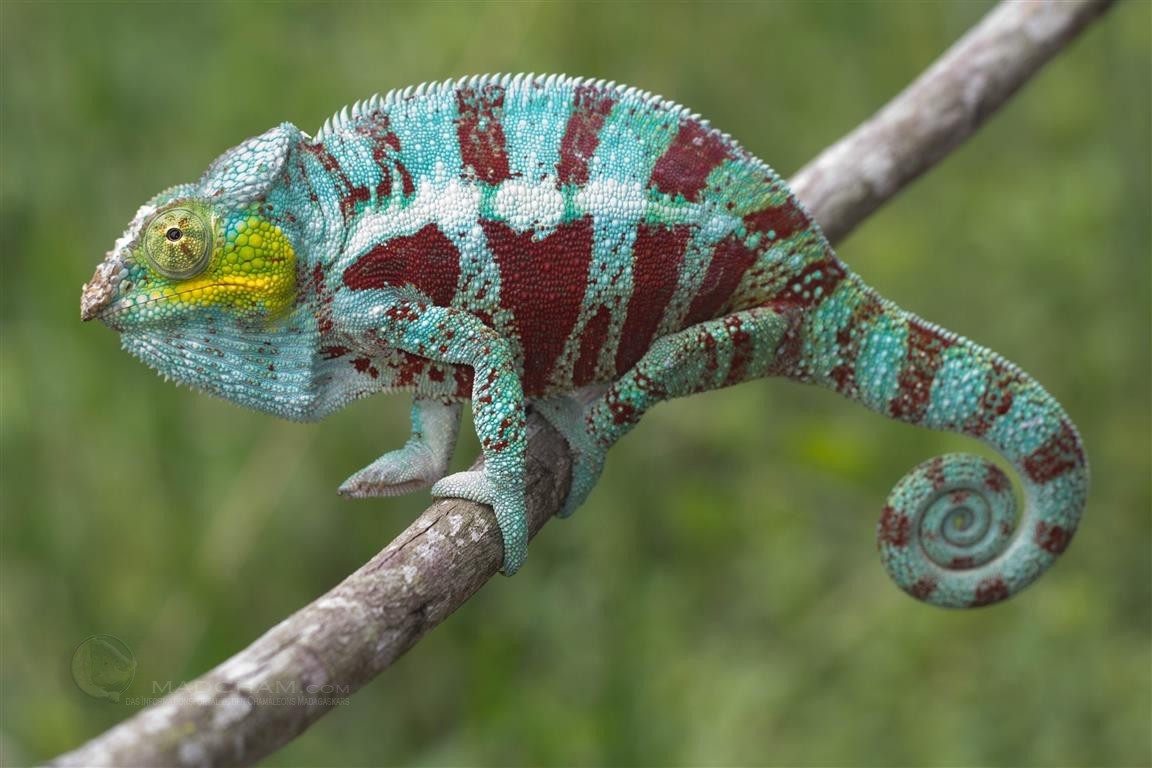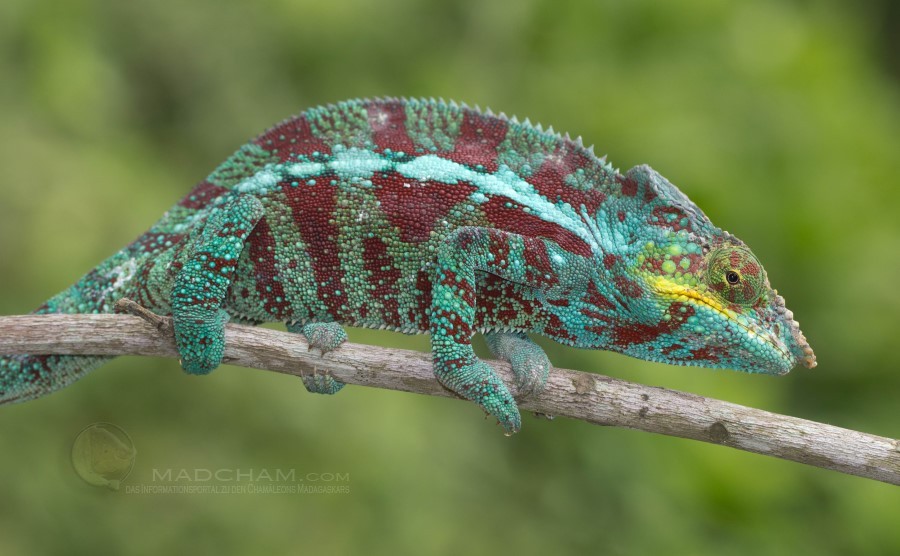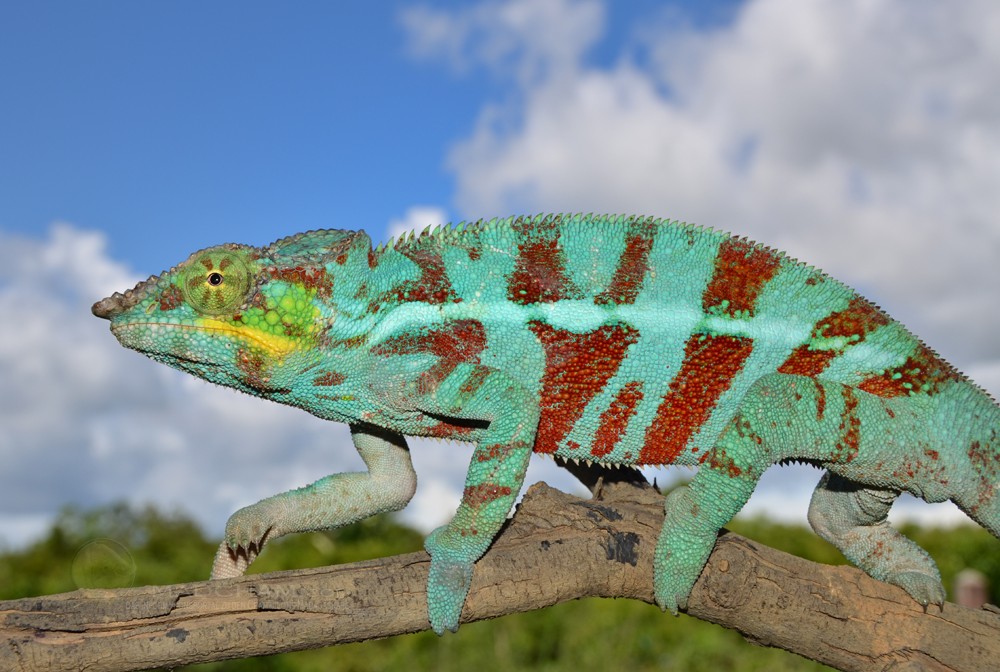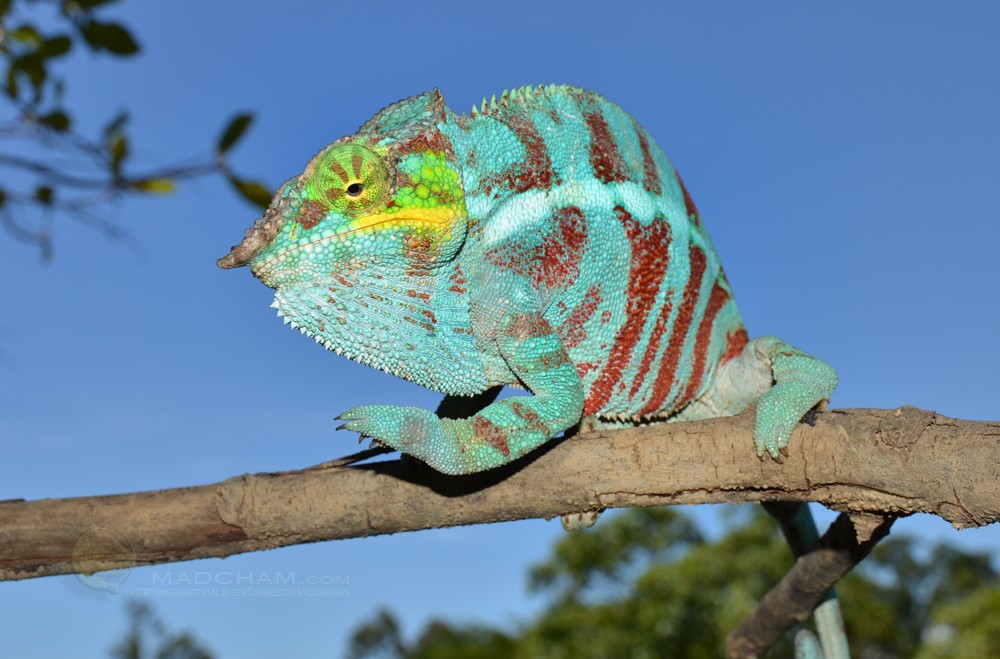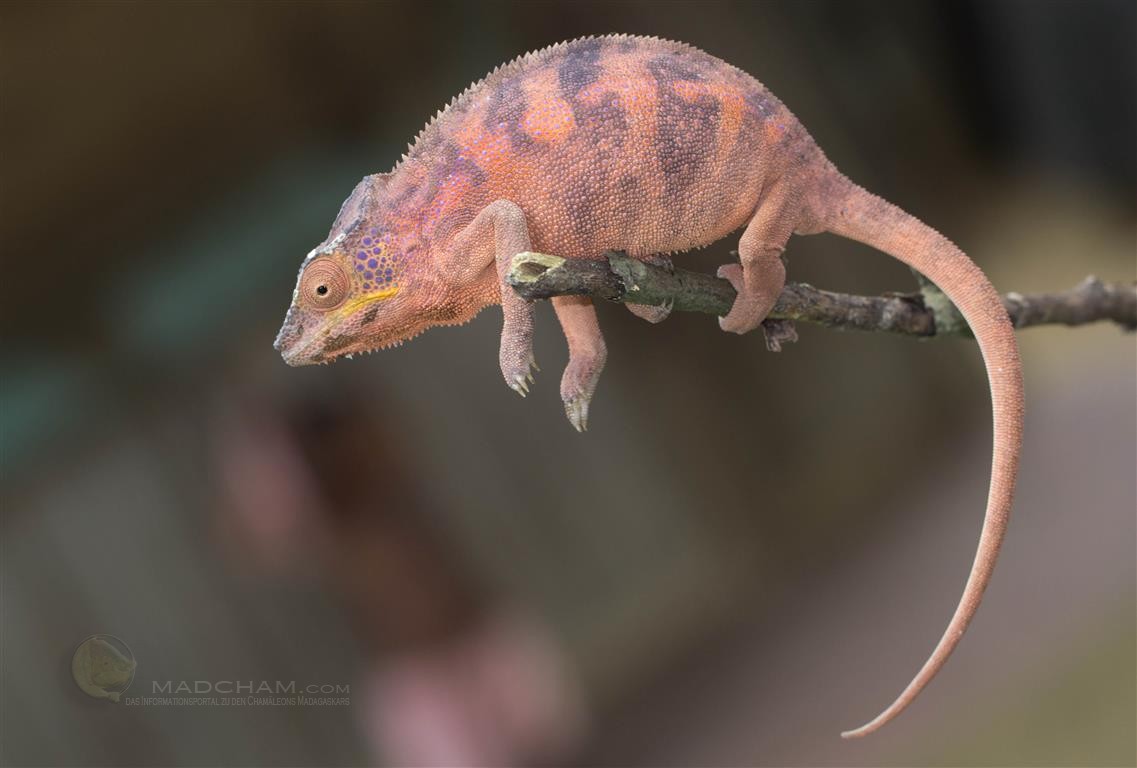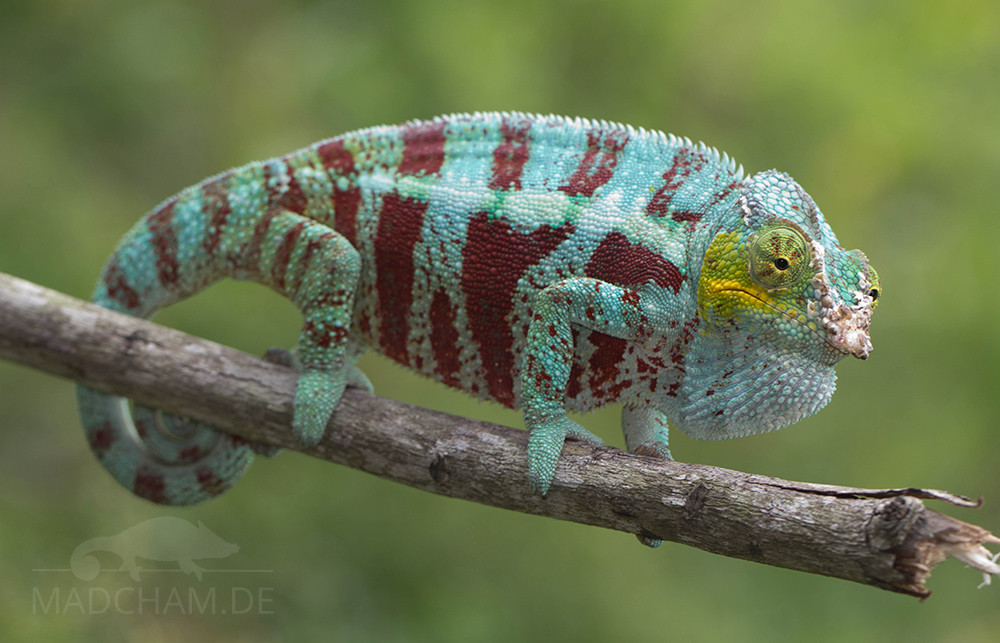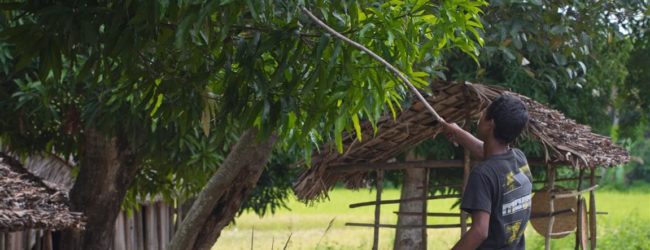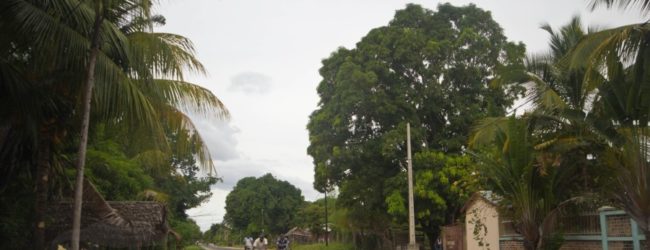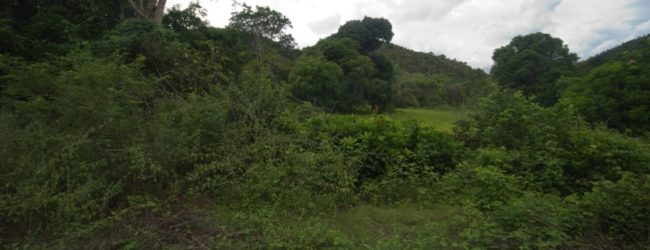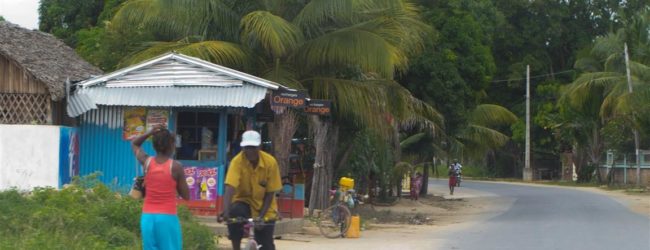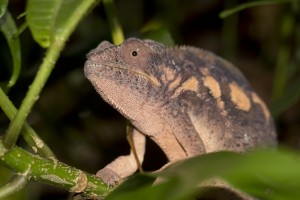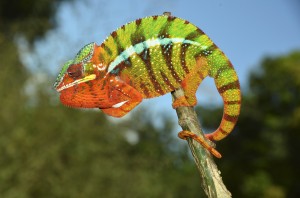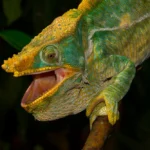Distribution of the local form Beramanja:
The small hut village Beramanja is located in the northwest of Madagascar in the region of Diana, directly between the two towns Ambilobe and Ambanja on the RN6. The village is surrounded by several rivers that isolate this habitat for panther chameleons. In the south runs the river Ifasy, in the north of Beramanja directly before Ambilobe runs the big river Mahavavy. The area is a sapphire mining area, so you should not travel outside the roads and villages without a local, knowledgeable guide, especially not alone. Many areas are private property and are not allowed to be entered. However, panther chameleons can also be found here in secondary vegetation at the roadside.
Appearance of the local form:
The colors of the males here are sky blue with a rust-red banding. Eyes, cheeks, and corners of the mouth are yellow to light green. The local form is very true to color, only very few and small deviations from these colors can be found.
Weight table
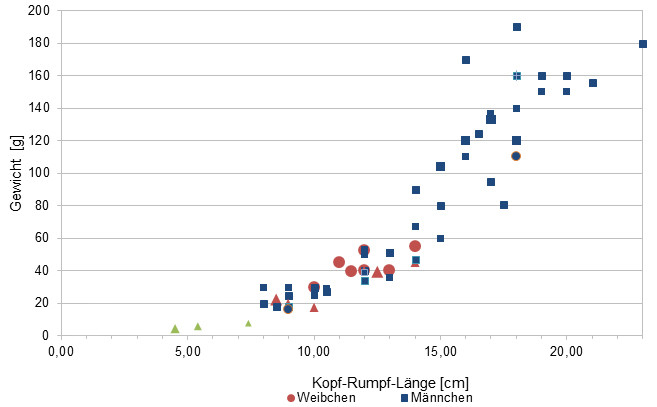
Gewicht = weight in grams, Kopf-Rumpf-Länge = snout-vent-length in cm, Weibchen = females, Männchen = males
Since 2015, we have been measuring the weights of chameleons found by us in Madagascar, as far as the animals (and our scales) participate. In the long term, we aim to obtain an average weight in relation to snout-vent-length (measured from the tip of the nose to the cloaca) for each species from as many measurements as possible. It is important to know that all weights were measured towards the end of the rainy season (= best food supply), so these should be maximum weights on Madagascar. Triangular symbols in females mean not pregnant, round symbols mean pregnant. In Furcifer pardalis, contrary to our original assumption, it has so far turned out that there are no serious differences in the ratio of SVL to weight between the individual local forms.
| Jan | Feb | Mar | Apr | May | Jun | Jul | Aug | Sep | Oct | Nov | Dec | |
| Average temperature | 26 | 26 | 26 | 26 | 25 | 24 | 23 | 23 | 24 | 25 | 26 | 26 |
| Minimum temperature | 22 | 22 | 22 | 22 | 20 | 18 | 18 | 18 | 19 | 20 | 21 | 22 |
| Maximum temperature | 30 | 30 | 31 | 31 | 30 | 29 | 29 | 29 | 30 | 31 | 31 | 30 |
| Rain days | 29 | 26 | 24 | 15 | 8 | 7 | 7 | 8 | 7 | 10 | 18 | 25 |
We have collected the data given above over several years with thermometers and hygrometers at the finding places of the chameleons. "Average temperature" means that values of a whole month have been calculated to one average value per month. For example all measured minimum temperature values of February have been calculated to one average minimum temperature for February. In plain language, this means single peak values of a day may be a little higher or lower than the average minimum and maximum temperatures. It is possible that a location has an average maximum temperature of 29°C, but one day during that month it had 33°C or even 35°C there.
Ambanja has warm temperatures around 25°C all year long. In sunny places, temperatures may rise above 30°C. At night, temperatures drop to 20°C, during dry season they may even fall slightly below to 18°C.
During rainy season, it rains daily and a lot, so humidity raises quickly. But the region remains green even during dry season. It may rain a lot less, but precipitaion is still regular. Additionally, the location between rivers cares for a steady water supply of trees and other plants.
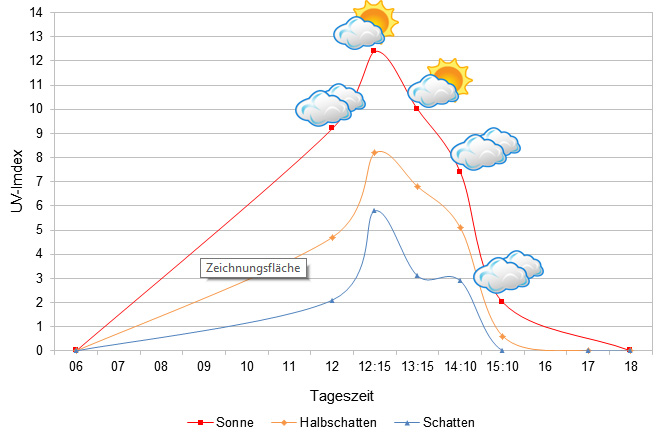
We have measured UVB data with a Solarmeter 6.5 in spring (beginning of April) at the peak of activity of chameleons in Madagascar. We always measured the values that a chameleon could maximally reach in its habitat.
Habitat:
The panther chameleons of Beramanja live in open landscapes and secondary vegetation around the ramshackle huts of the village. Big old mango trees dominate the landscape. Additionally, this is the region where the cocoa and coffee plantations of Ambanja begin that also serve as habitat for panther chameleons. You can find the animals also in bushes and palms right at the edge of the street.

